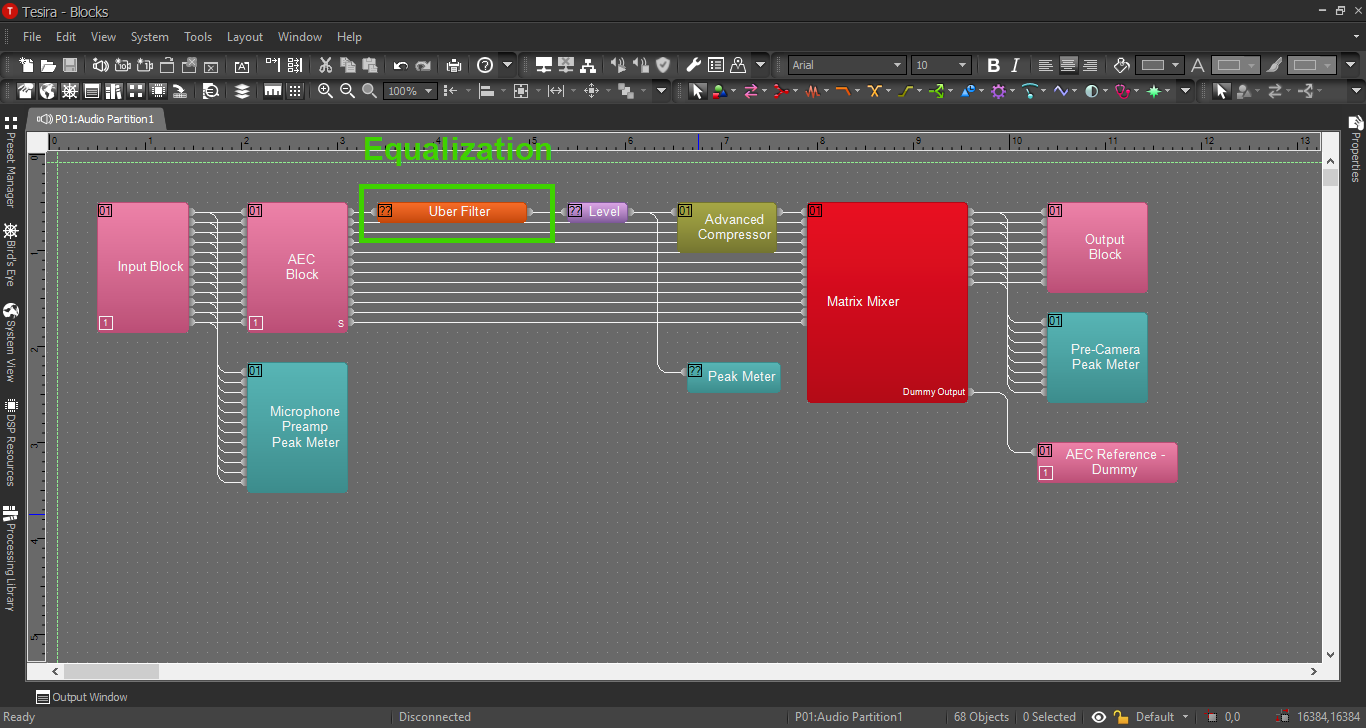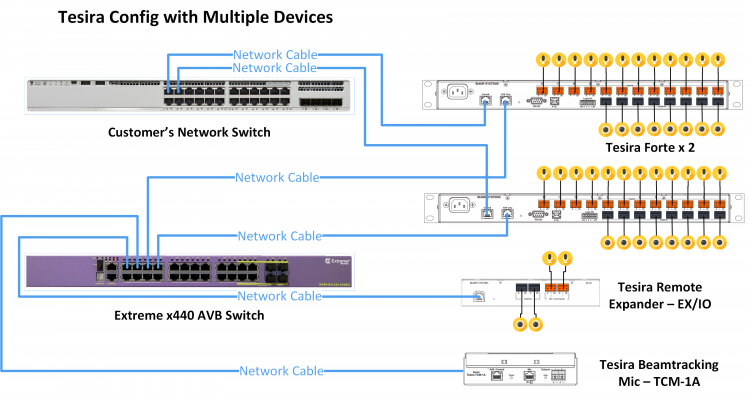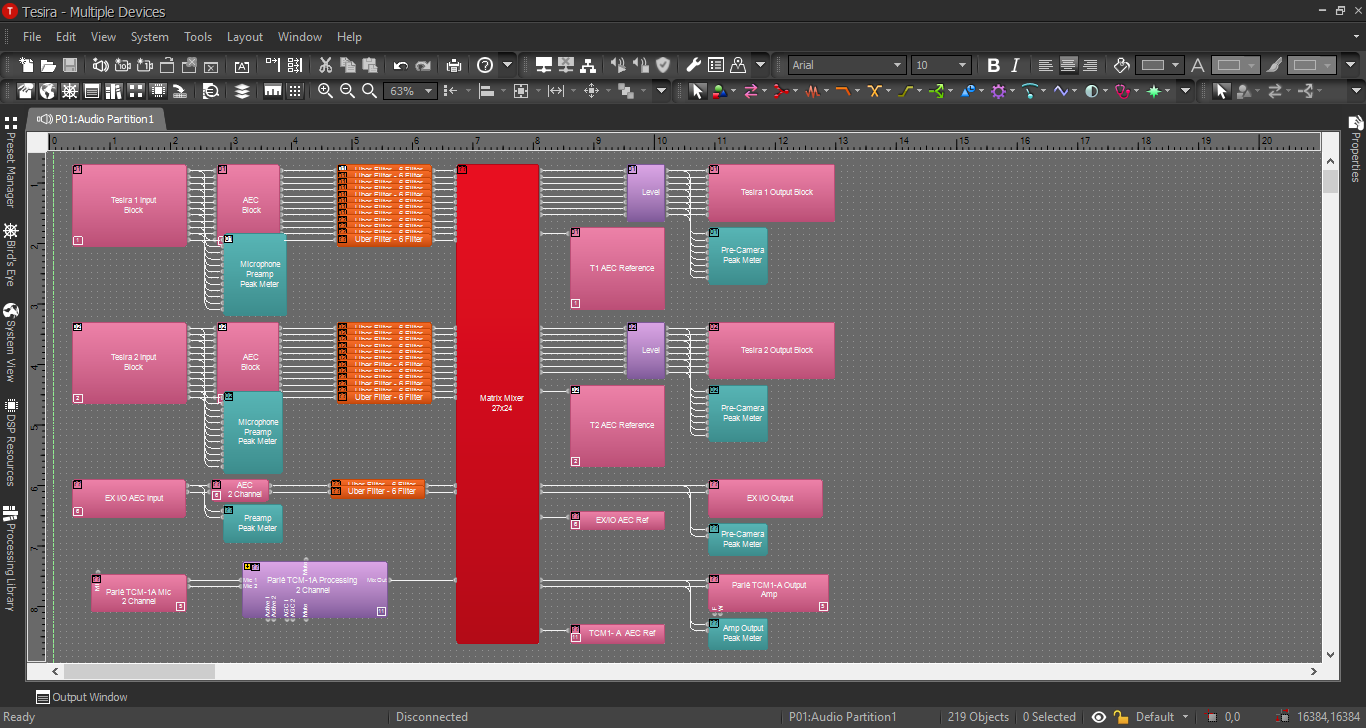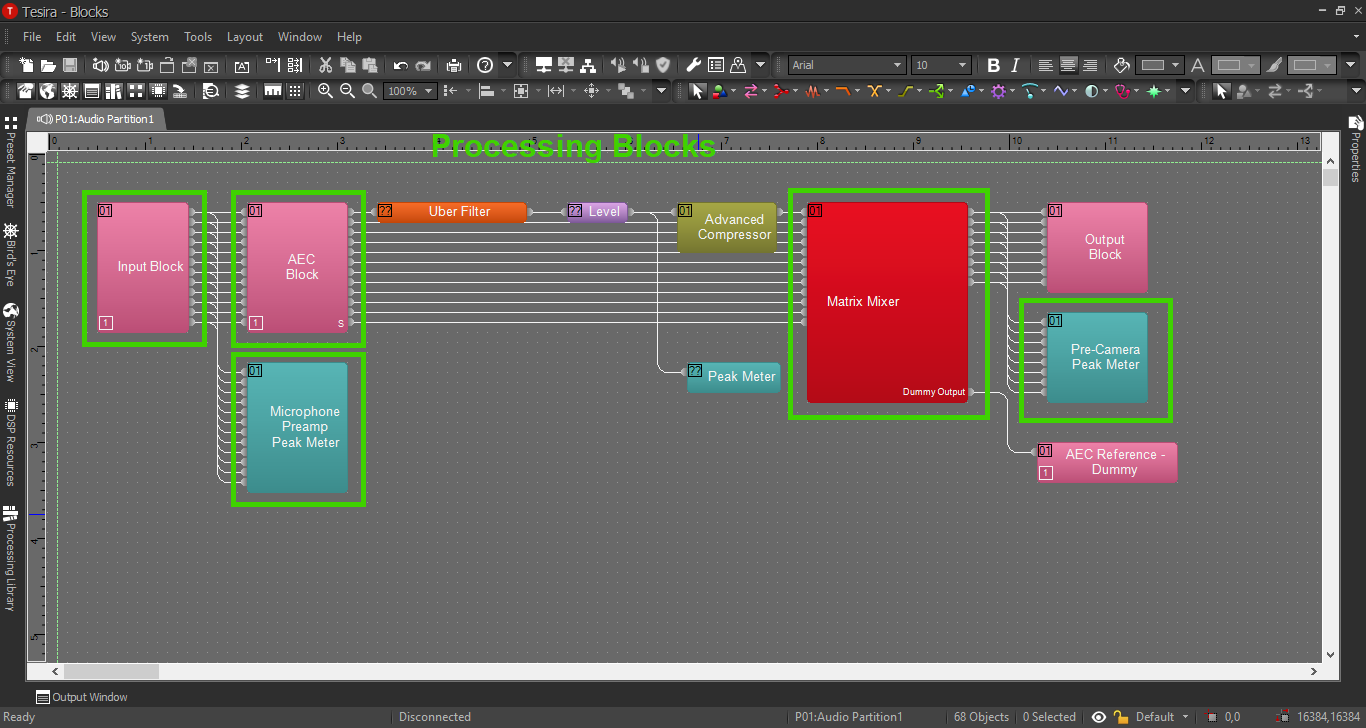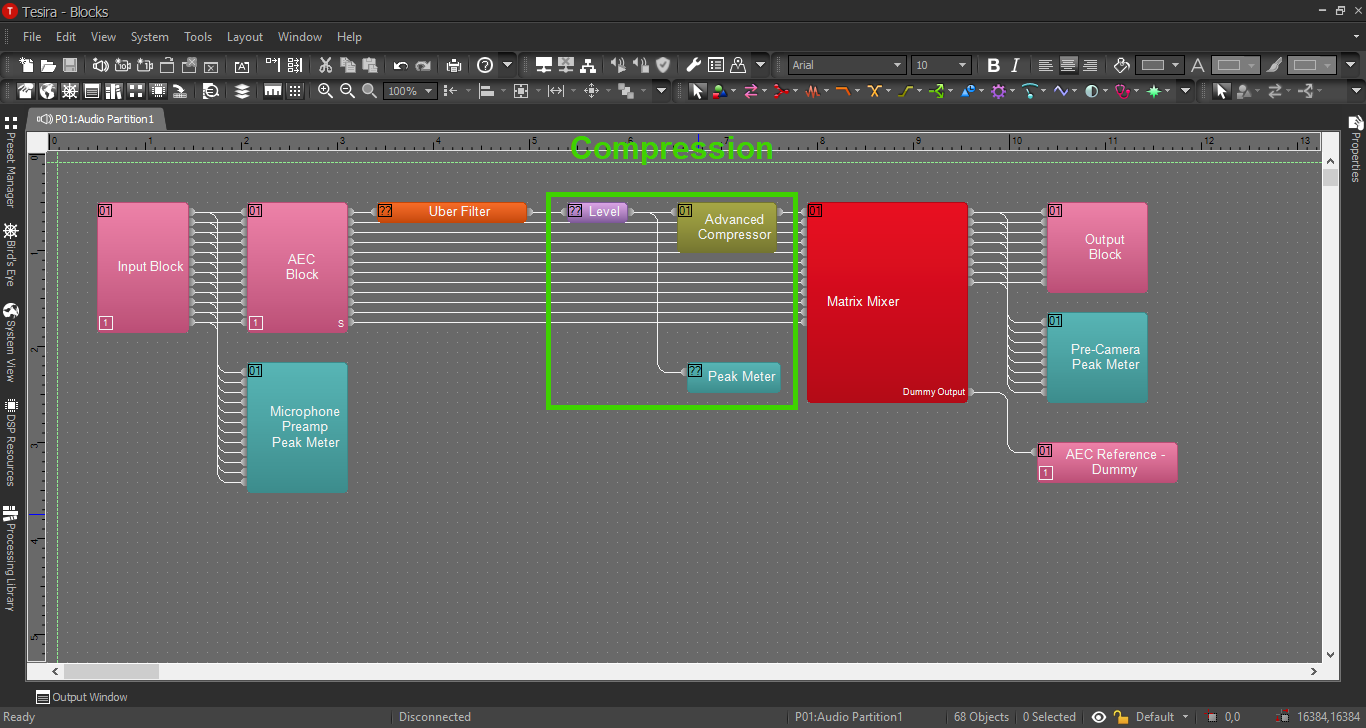Difference between revisions of "Multiple Devices Configuration"
IVSWikiBlue (talk | contribs) (→Processing Blocks) |
IVSWikiBlue (talk | contribs) (→EQ and Compression) |
||
| (7 intermediate revisions by the same user not shown) | |||
| Line 5: | Line 5: | ||
Connect microphones and cameras to the inputs and outputs of the Tesira. Connect the TCM-1A and the Expander to the Extreme switch. Connect the "AVB Only" ports from both Tesira Forte's to the AVB switch as well. A customer may or may not want the Tesira or the Extreme switch on their network. In this example, the Tesira is on the customer's network, but not the Extreme switch. Connect the "Control" ports on the Tesira Forte's to the network. | Connect microphones and cameras to the inputs and outputs of the Tesira. Connect the TCM-1A and the Expander to the Extreme switch. Connect the "AVB Only" ports from both Tesira Forte's to the AVB switch as well. A customer may or may not want the Tesira or the Extreme switch on their network. In this example, the Tesira is on the customer's network, but not the Extreme switch. Connect the "Control" ports on the Tesira Forte's to the network. | ||
| − | + | {{img | file = Multiple_Devices_Line_Diagram_3.png | width=750px}} | |
=Tesira Software= | =Tesira Software= | ||
| − | == | + | ==Connections== |
# If we've completed our physical connections, open the Tesira software and start building a configuration. Add the following blocks: | # If we've completed our physical connections, open the Tesira software and start building a configuration. Add the following blocks: | ||
#* TesiraFORTE CI block x 2 | #* TesiraFORTE CI block x 2 | ||
| Line 30: | Line 30: | ||
When we're complete, our file should look something like this: | When we're complete, our file should look something like this: | ||
| − | + | {{img | file = Multiple_Devices_Config.png}} | |
| − | #* Note #1: It is not crucial to create | + | #* Note #1: It is not crucial to create one Matrix Mixer with dozens of inputs and outputs, if the inputs and outputs are somewhat localized, or "paired". Separate mixers will suffice if this is the case. |
#* Note #2: If the configuration will include multiple Forte servers, but no Parle mics or Remote Expanders, AND audio will not need to travel between Forte devices, there is no need for an AVB switch. | #* Note #2: If the configuration will include multiple Forte servers, but no Parle mics or Remote Expanders, AND audio will not need to travel between Forte devices, there is no need for an AVB switch. | ||
| + | #* Note #3: When dealing with multiple devices, make sure the number in the bottom left-hand corner of the Tesira/Expander device blocks reflect the proper device's number in the Equipment Table. | ||
==Processing Blocks in Tesira== | ==Processing Blocks in Tesira== | ||
| − | + | For further insight about the other processing blocks and settings, refer back to the first configuration example, or click the image below: | |
| − | |||
| − | |||
| − | |||
| − | |||
| − | |||
| − | |||
| − | |||
| − | |||
| − | |||
| + | {{img | file = Processing_Blocks_Page.png}} | ||
==EQ and Compression== | ==EQ and Compression== | ||
For information on EQ settings, or click the image below: | For information on EQ settings, or click the image below: | ||
| − | + | {{img | file = EQ_Page.png}} | |
For Compression parameters, click the image below: | For Compression parameters, click the image below: | ||
| − | + | {{img | file = Compression_Page.png}} | |
Latest revision as of 10:36, 10 May 2022
Contents
Description/Objective
In this example, we will be connecting multiple mics, cameras, and Tesira devices. Altogether, our hardware will include 26 room microphones, 18 cameras, two Tesira Forte CI's, one remote EX-IO expander, one TCM-1A Beamtracking microphone, and one Extreme X440 AVB switch.
Physical Wiring/Line Diagram
Connect microphones and cameras to the inputs and outputs of the Tesira. Connect the TCM-1A and the Expander to the Extreme switch. Connect the "AVB Only" ports from both Tesira Forte's to the AVB switch as well. A customer may or may not want the Tesira or the Extreme switch on their network. In this example, the Tesira is on the customer's network, but not the Extreme switch. Connect the "Control" ports on the Tesira Forte's to the network.
Tesira Software
Connections
- If we've completed our physical connections, open the Tesira software and start building a configuration. Add the following blocks:
- TesiraFORTE CI block x 2
- AEC Input Block with 2 channels (the remote expander)
- Output Block with 2 channels (the remote expander)
- Parle Microphone Block
- Parle Processing Block
- Peak Meter x 7
- Matrix Mixer with 27 inputs and 24 outputs
- Uber Filters x 26
- Connect the blocks as follows:
- Connect three peak meters to the Tesira Input blocks and the EX/IO Input block. This will help us to be sure we have the proper levels set on the preamp.
- Connect the AEC blocks to the Uber Filters, then the filters to the Matrix Mixer.
- Connect the Parle Mic Block to the Parle Processing Block, then the Processing Block to the Matrix Mixer.
- Connect the outputs from the mixer to the Output blocks AND to the other peak meters. This way we can make sure to reach the right audio levels before we send it to the camera.
- Connect the extra outputs from the Matrix Mixer to the AEC reference blocks. We will not need to activate the Automatic Echo Cancellation feature in this example.
When we're complete, our file should look something like this:
- Note #1: It is not crucial to create one Matrix Mixer with dozens of inputs and outputs, if the inputs and outputs are somewhat localized, or "paired". Separate mixers will suffice if this is the case.
- Note #2: If the configuration will include multiple Forte servers, but no Parle mics or Remote Expanders, AND audio will not need to travel between Forte devices, there is no need for an AVB switch.
- Note #3: When dealing with multiple devices, make sure the number in the bottom left-hand corner of the Tesira/Expander device blocks reflect the proper device's number in the Equipment Table.
Processing Blocks in Tesira
For further insight about the other processing blocks and settings, refer back to the first configuration example, or click the image below:
EQ and Compression
For information on EQ settings, or click the image below:
